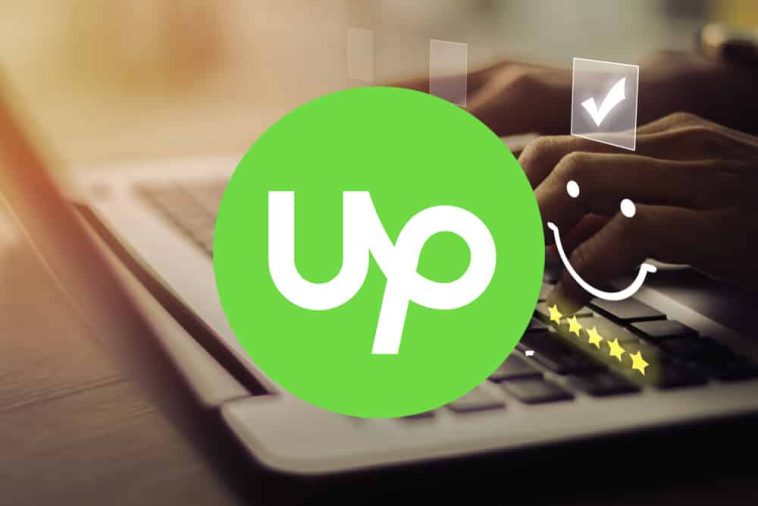Introduction.
Upwork has become a popular platform for freelancers around the world, offering opportunities to work with clients from all kinds of industries.
It’s not just about sending messages back and forth — it’s about building trust, setting expectations, and creating a strong, professional relationship that helps both you and your client succeed.
If you’ve been on Upwork for any amount of time, you know that first impressions really do matter. Your communication style can make or break a project, and it’s easy to see how things can go sideways if you’re not clear or don’t understand what the client wants.
So, how do you go about talking with a client on Upwork in a way that leaves a positive impact and sets you up for success? Let’s dive into the nitty-gritty.
Why Clear Communication is Key
You’ve probably heard the phrase, “communication is key,” and when it comes to freelancing, this couldn’t be more true.
When you’re working remotely, especially on a platform like Upwork where you might never meet your clients in person, effective communication is even more crucial.
Clients rely on you to understand their needs, meet deadlines, and deliver quality work, all while keeping them in the loop about progress.
Without good communication, things can get lost in translation. You might end up working on something that doesn’t meet the client’s expectations, or worse, missing a key part of the project that leaves them frustrated.
On the flip side, being able to talk clearly and confidently with clients sets you apart as a professional and helps you build a reputation for reliability and trustworthiness. This can lead to repeat business, great reviews, and even long-term client relationships.
So, let’s break down how to communicate effectively with a client on Upwork and avoid common pitfalls.
How Do I Talk With a Client On Upwork?
1. Start With a Strong Introduction
When you’re starting a conversation with a potential client, the way you introduce yourself matters. Keep it professional, but also personal enough to show you’re approachable and interested in their project.
Your first message should be clear and concise, explaining who you are and why you’re a good fit for the job. A friendly tone can go a long way in helping the client feel at ease.
Here’s an example of a good introduction:
Subject: Application for Your Website Copywriting Project
Hi [Client’s Name],
I hope you’re doing well! I came across your project for writing website copy, and I think my experience aligns perfectly with what you’re looking for.
I’ve worked with several clients in the [insert industry] and helped them craft engaging content that resonates with their audience.
I’d love to learn more about your business and the specific goals you have for the website. Looking forward to hearing from you!
Best regards,
[Your Name]
Notice how the message is polite, direct, and gives the client enough information to know who you are and why you’re reaching out. It also invites a response by asking about their goals, which shows you’re interested in their needs.
2. Listen and Understand the Client’s Needs
One of the biggest mistakes freelancers make is assuming they know what the client wants without asking enough questions.
Don’t just focus on sending proposals — take the time to really understand what the client needs.
Ask questions if something is unclear or if you need more details. Clients often appreciate when you take the time to clarify their expectations. The more you know about the project, the better you can tailor your approach.
Here are some questions you can ask to dig deeper into the client’s needs:
- Can you describe the project in more detail?
- What’s the main goal of this project?
- Do you have any specific deadlines I should be aware of?
- Are there any examples of work you like or dislike?
3. Be Clear About Your Availability and Deadlines
From the get-go, be transparent about your availability. Upwork clients are often juggling multiple projects, so they appreciate freelancers who are clear about when they can start and how long a task might take.
If you’re working on multiple projects at once, it’s okay to say so, but make sure to manage expectations by outlining how much time you can realistically dedicate to their project.
For example:
Hi [Client’s Name],
I just wanted to confirm that I’ll be able to start your project on [start date]. I expect to complete the first draft of the [deliverable] within [X] days. If that timeline works for you, I can get started right away!
Let me know if you have any specific preferences on the timeline.
Best regards,
[Your Name]
Being honest about timelines avoids misunderstandings later and builds credibility. It also shows that you respect the client’s time.
4. Keep Your Communication Professional but Friendly
Whether you’re messaging back and forth throughout the project or having a video call, it’s important to keep a balance between professionalism and friendliness.
Being overly formal can come off as stiff, while being too casual can make you seem unprofessional.
Here are some tips for striking that balance:
- Use proper grammar and punctuation.
- Be polite and respectful.
- Don’t overuse slang, but feel free to use a conversational tone that matches the client’s communication style.
- If something is unclear, don’t hesitate to ask for clarification.
Remember, your goal is to make the client feel comfortable and confident in your ability to handle the project. A little warmth can go a long way!
5. Set Expectations Early
It’s critical to set clear expectations about how you’ll work together. This includes talking about payment, deadlines, revisions, and how you’ll handle feedback.
Being upfront about these things will help prevent misunderstandings and keep things running smoothly.
Here’s an example of how you might set expectations:
Hi [Client’s Name],
I’m really excited to get started on this project! Just to make sure we’re aligned on expectations, here’s how I typically work:
- I’ll deliver the first draft by [date].
- I’ll include [X number] of revisions if necessary.
- My rate for this project is [rate] per hour/fixed price, and payment is due upon completion unless we agree on milestones.
Let me know if you’d like to adjust any of this!
Looking forward to collaborating!
[Your Name]
Setting clear expectations doesn’t mean you’re being rigid — it just helps create a framework for how things will move forward.
6. Regularly Update the Client
Clients love to know how things are progressing. Keep them in the loop, especially if there’s any change in the timeline or if you’re encountering obstacles. Regular updates show that you’re dedicated and that their project is in good hands.
A quick message like this can work wonders:
Hi [Client’s Name],
Just wanted to check in and let you know that I’m making good progress on your project! I’ve completed [X% of the work] and expect to have a draft ready by [date]. Let me know if you have any thoughts or feedback in the meantime!
Best regards,
[Your Name]
7. Be Open to Feedback
Constructive criticism is part of the job. Clients will likely have feedback, and it’s important to handle it with grace.
If they ask for changes, be open and professional in your response. If you disagree with a suggestion, try to explain your reasoning in a polite, non-confrontational manner.
A good response to feedback might look like this:
Hi [Client’s Name],
Thank you for the feedback! I understand your concern and I’ll make the necessary changes. I’ll revise [X] and get it back to you by [date]. Let me know if there’s anything else you’d like me to adjust!
Best regards,
[Your Name]
8. Wrapping Things Up
Once the project is completed, don’t just disappear. Thank your client for the opportunity to work with them and ask if they need anything else.
A little gratitude goes a long way in building lasting relationships. And, of course, asking for a review at the end is always a good idea!
Hi [Client’s Name],
I’ve completed the project and have attached the final deliverables. Thank you so much for the opportunity to work on this! If you need any revisions or additional work in the future, don’t hesitate to reach out.
Also, if you’re happy with the work, I’d appreciate it if you could leave a review. It helps me a lot as a freelancer!
Best regards,
[Your Name]
Conclusion
Building a solid client relationship on Upwork is all about clear, respectful, and professional communication.
From your first message to the final deliverable, how you communicate can impact not just the current project, but your reputation and future opportunities.
Next time you chat with a client, ask yourself: How can I make this conversation more productive, clear, and positive?
By focusing on understanding their needs, setting expectations, and maintaining a friendly yet professional tone, you’ll not only improve your chances of success on Upwork but also build long-term relationships that lead to more projects.
What will you do differently in your next Upwork conversation?





GIPHY App Key not set. Please check settings